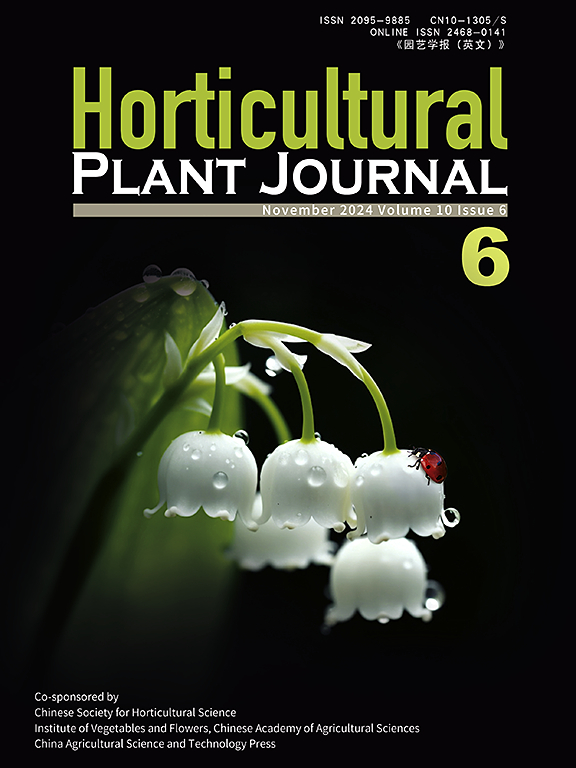Development of a rapid and efficient system for CR genes identification based on hairy root transformation in Brassicaceae
IF 5.7
1区 农林科学
Q1 HORTICULTURE
引用次数: 0
Abstract
Many economically important crops and vegetables belonging to the cruciferous family are heavily endangered by clubroot disease caused by infection. Breeding of clubroot resistant cultivars based on mapping and cloning of resistant genes is commonly regarded as the most cost-effective and efficient way to fight against this disease. The traditional way of R gene functional validation requires stable transformation that is both time- and labor-consuming. In this study, a rapid and efficient hairy-root transgenic protocol mediated by was developed. The transformation positive rate was over 80% in showed by GUS reporter gene and this transformation only took 1/6 of the time compared with stable transformation. The system was applicable to different varieties and other cruciferous crops including and . In particular, two known CR genes, and were used respectively, as example to show that the system works well for CR gene study combined with subsequent infection in . Most importantly, it works both in over-expression that led to disease resistance, as well as in RNAi which led to disease susceptible phenotype. Therefore, this system can be used in batch-wise identification of CR genes, and also offered the possibility of manipulating key genes within the genome that could improve our knowledge on host–pathogen interaction.基于十字花科植物毛根转化技术开发快速高效的 CR 基因鉴定系统
许多具有重要经济价值的十字花科作物和蔬菜都受到由感染引起的棒根病的严重危害。基于抗病基因的图谱绘制和克隆培育抗球根病栽培品种通常被认为是抗击该病害最经济有效的方法。传统的 R 基因功能验证方法需要稳定的转化,既费时又费力。本研究开发了一种快速高效的毛根转基因方案。在 GUS 报告基因的作用下,转化阳性率超过 80%,与稳定转化相比,这种转化只需 1/6 的时间。该系统适用于不同的品种和其他十字花科作物,包括 和 。 特别是,以两个已知的 CR 基因和为例,表明该系统能很好地用于 CR 基因研究,并与随后在 。最重要的是,该系统既能通过过度表达获得抗病性,也能通过 RNAi 获得易感病表型。因此,该系统可用于批量鉴定 CR 基因,还提供了操纵基因组内关键基因的可能性,从而提高我们对宿主与病原体相互作用的认识。
本文章由计算机程序翻译,如有差异,请以英文原文为准。
求助全文
约1分钟内获得全文
求助全文
来源期刊

Horticultural Plant Journal
Environmental Science-Ecology
CiteScore
9.60
自引率
14.00%
发文量
293
审稿时长
33 weeks
期刊介绍:
Horticultural Plant Journal (HPJ) is an OPEN ACCESS international journal. HPJ publishes research related to all horticultural plants, including fruits, vegetables, ornamental plants, tea plants, and medicinal plants, etc. The journal covers all aspects of horticultural crop sciences, including germplasm resources, genetics and breeding, tillage and cultivation, physiology and biochemistry, ecology, genomics, biotechnology, plant protection, postharvest processing, etc. Article types include Original research papers, Reviews, and Short communications.
 求助内容:
求助内容: 应助结果提醒方式:
应助结果提醒方式:


